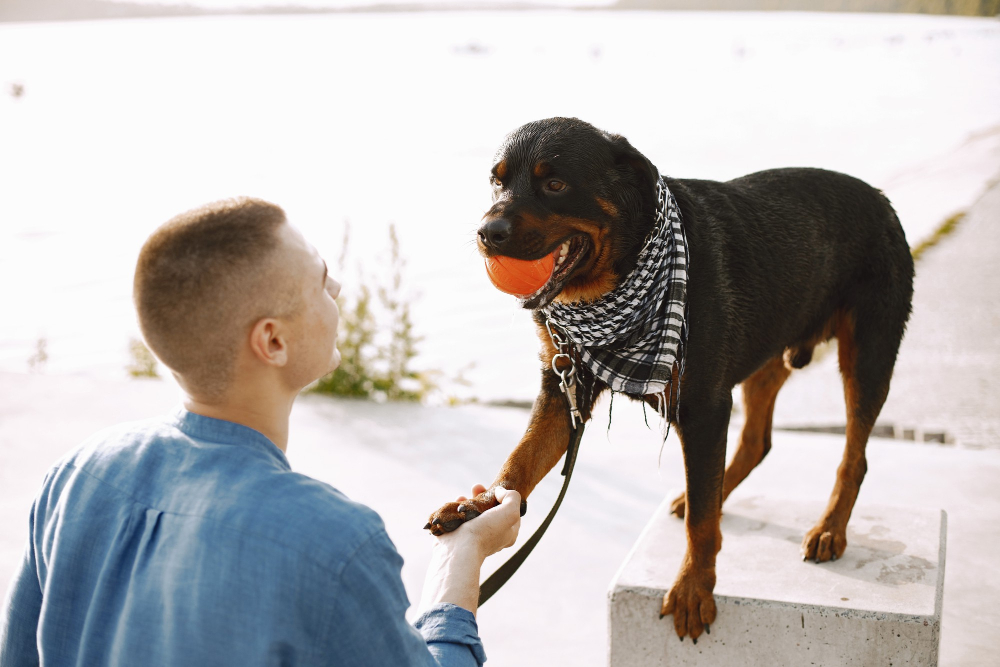Rottweilers are natural protectors, known for their loyalty and confidence. These powerful traits can easily tip into over-guarding without the right structure. Taming the Rottweiler’s instinct means recognizing their desire to defend and giving them direction that builds trust and control.
Understanding the Guardian Temperament
Rottweilers often bark at strangers, patrol the yard, or insert themselves between their owner and a guest. These behaviors reflect alertness, not aggression. However, without proper guidance, they can develop into unwanted habits. Recognizing the early signs helps prevent problems before they escalate.
Advanced Socialization Strategies
Early and consistent socialization is essential. Controlled introductions to people, environments, and sounds teach your Rottweiler how to stay calm. For example, ask a friend to play the role of a guest. When your dog stays relaxed during the visit, offer a reward. Exercises like these reduce tension around strangers and improve decision-making.
Teaching Bark-and-Hold
Instead of letting your Rottweiler decide when and how to react, teach the “bark and hold” command. Encourage a single alert bark, then reward quiet focus. This method allows them to communicate without turning defensive. It’s particularly effective when paired with solid obedience skills.
Managing Physical Guarding
Rottweilers often position themselves between you and perceived threats. Rather than discourage this entirely, teach them to move to a designated “place” on command. This redirection respects their instincts while keeping situations under control. It also gives guests space without removing your dog’s sense of purpose.
The Importance of Calm Leadership
Forceful handling often backfires with this breed. Rottweilers respond to confident, consistent leadership—especially when commands are clear and corrections are fair. Avoid shouting or harsh punishment, as it may damage your bond and worsen guarding behaviors.
Mental Challenges to Burn Energy
Scent games, puzzle feeders, and tracking drills keep Rottweilers sharp and engaged. These activities allow them to use their brains and bodies productively, reducing stress and reinforcing good behavior.
Know When to Get Help
Some guarding behaviors go beyond DIY solutions. If your dog shows signs of anxiety, aggression, or unpredictability, work with a professional. Choose someone experienced in Rottweiler Protective Training and Breed-Specific Behavior Management to ensure lasting results.
With commitment and smart training, Taming the Rottweiler’s protective instincts becomes a strength—not a struggle.

